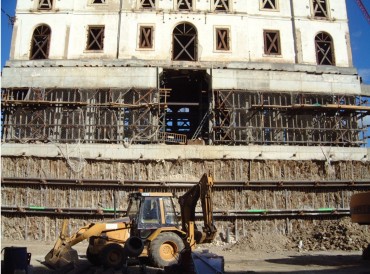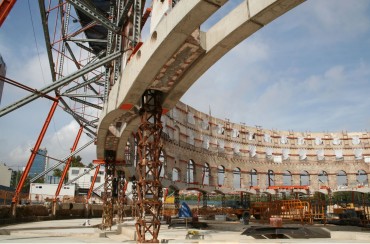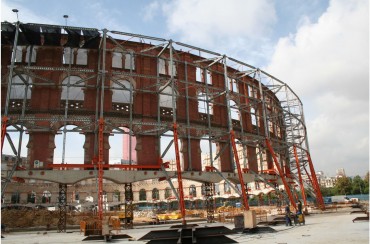15.7.2014 – Issue 12 - Earth – Obiol Augusti – Studio, Essays
ON FOUNDATIONS
by Augusti Obiol
The first concerns of the architecture project when addressing the future construction site are, necessarily, spatial, tectonic and topological; always resting on it, but in some cases fitting into it, and in yet others sinking right into it to root it there. Occasionally, this in-depth colonization goes beyond the objectives of merely seeking settlement to try to extract some of the earth’s resources; material or energy, water or thermal stability. However, the land itself is much more than a geometry, a texture, an atmosphere or a material; it is the only structural component that is untouched by the processes of human manufacture; further, in the process of transfer of the loads that act on the building, the land is the ultimate receptor.
In return for our demands, the site requires us to meet its own physical and mechanical laws. In some cases, this obliges us to adopt measures to protect ourselves from it. We have to know its mechanical properties to ensure that it can adequately withstand the forces that will be applied to it, without excessive settlement that would alter the functionality of the construction or, of course, cause it to collapse; we have to address possible groundwater seepage, or isolate the building, allowing it to float to prevent the mobilization in it of the inertial forces generated by seismic action.
Essentially, this means establishing a dynamic of exchange in which each demand that we make calls for some return on our part; and, in general, the greater our demands on the site, the more precise and intense our level of interaction with it has to be.
Excavation involves the need to use very precise geometries on some occasions or to contain the outward thrust of the earth, which can be huge, on others. We can, however, resolve this contention by even greater aggression, by implementing deep anchorage. Floating or levitating calls once again, in physical reality, for the need to penetrate deep enough into the earth to find its strongest strata, capable of withstanding the intense specific stresses to which these types of relation habitually give rise. It is also at greater depth that we obtain the mass and the thermal stability required to establish the heat flow that may be able to provide some of the energy needed by the building to function.
In consequence, what we generally call “foundation” is simply the other face—the technological side—of our strategy of spatial and functional appropriation of the site; that which allows us to generate an interface surface densely run through by a frequently complex fabric of tension flows, essentially, but also, on occasion, by other flows that are energetic or material in nature, which enable the construction and the continuing presence of the building.
Download article as PDF





